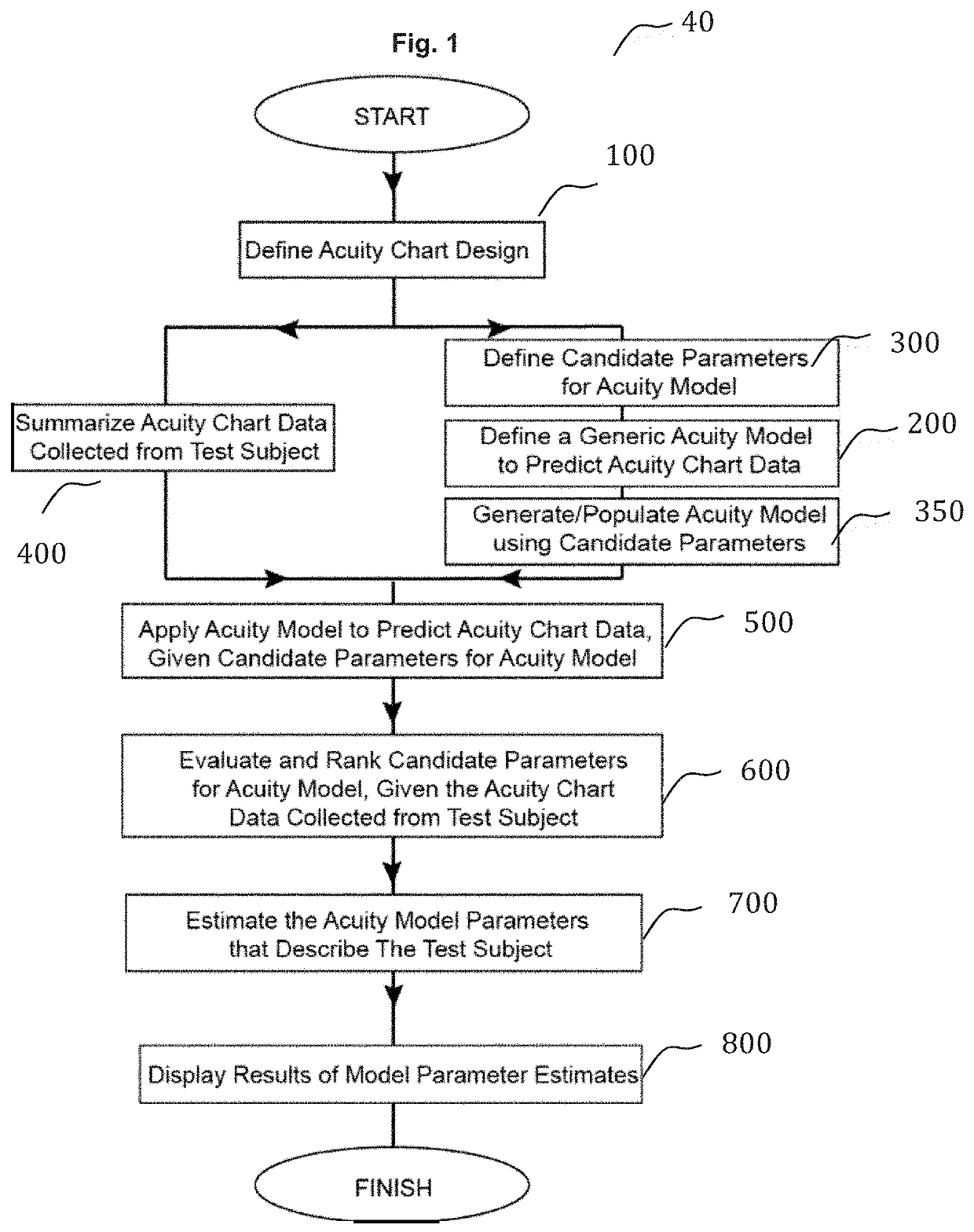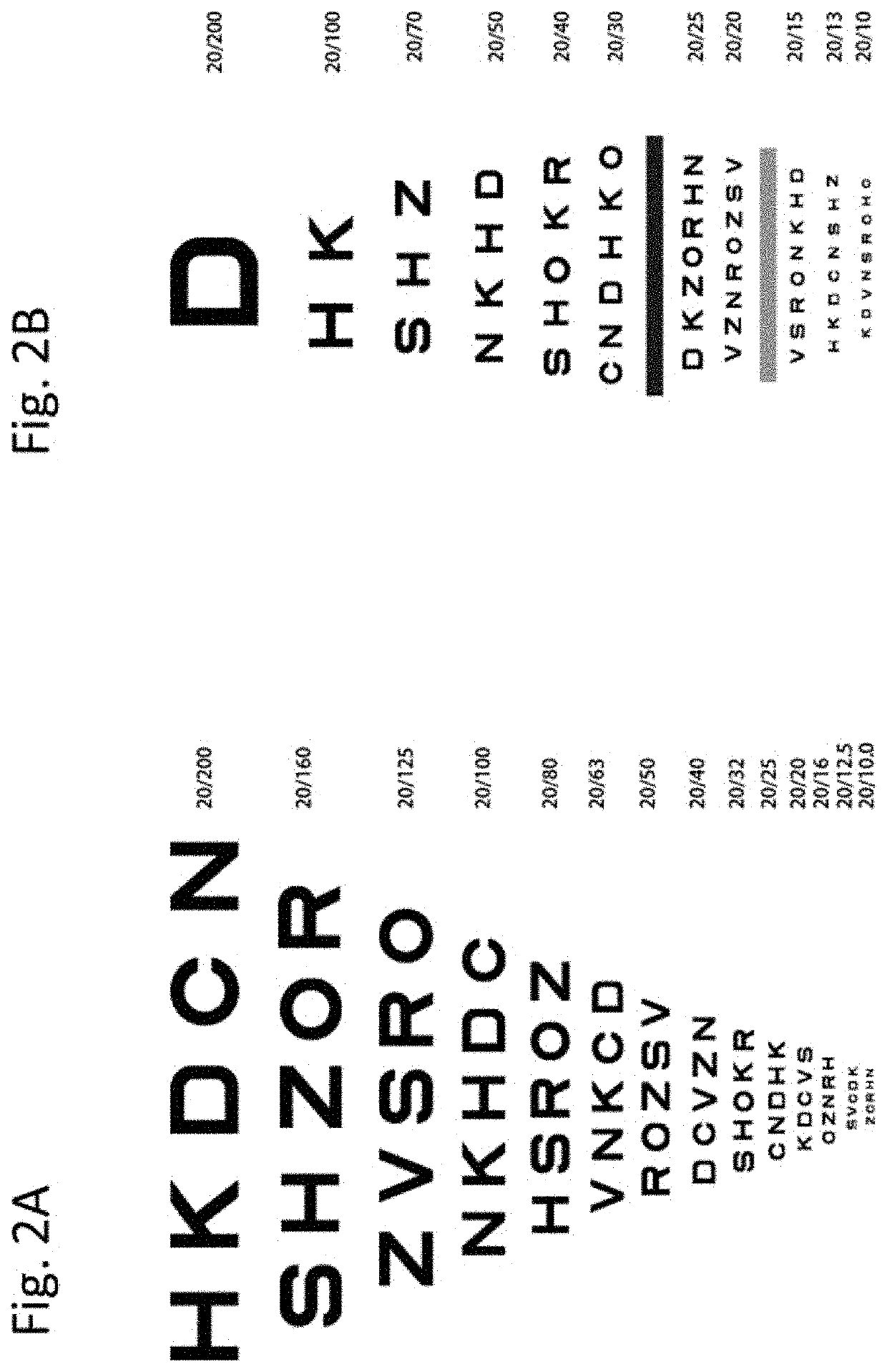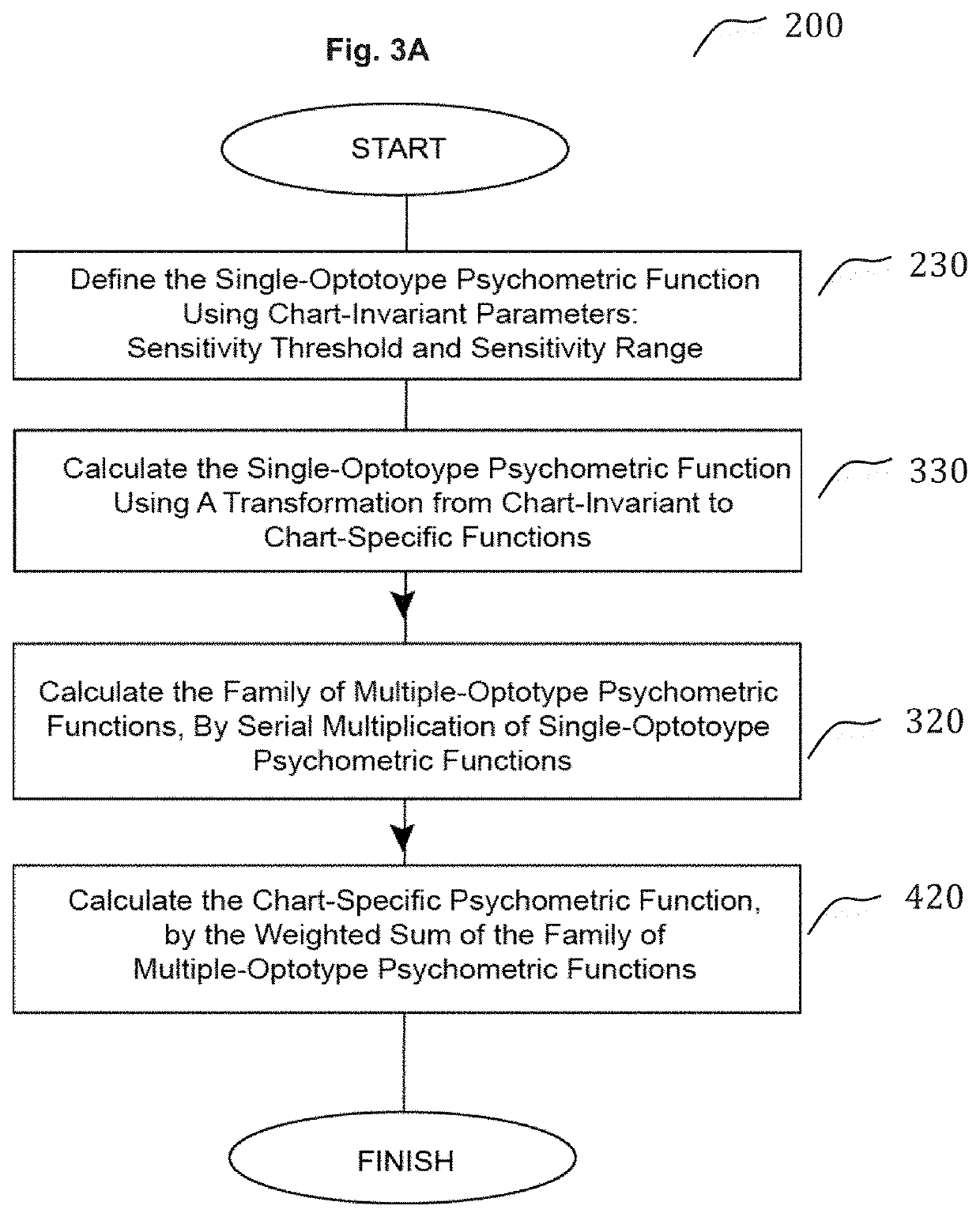Systems and methods for testing and analysis of visual acuity and its changes
a visual acuity and system technology, applied in the field of systems and methods for testing and analysis of visual acuity and its changes, can solve the problems of difficult comparison and coordination of visual acuity testing obtained with different charts, unfeasible clinical testing by eye care specialists or general practitioners, and difficulty in chart design and testing standards. achieve the effect of increasing test resolution
- Summary
- Abstract
- Description
- Claims
- Application Information
AI Technical Summary
Benefits of technology
Problems solved by technology
Method used
Image
Examples
example 1
[0363]A computer-based medical system as disclosed herein is used for tests and analyses of visual acuity of a diabetic subject by presenting to the subject with three out of the ten Sloan letters at a time on a digital screen. The prior information used to initiate the testing is a population-based study of visual acuity. With those population estimates, the device applies algorithm A to present the subject with high-rank single-line sub-charts on each test slide. After applying algorithm S to evaluate the acuity chart data collected on each slide, with respect to an acuity model that is predicting the respective probabilities of reporting 0, 1, 2, or 3 letters correctly on each slide, the next slide is selected based on a re-iterative application of algorithm A. When the patient returns for the next testing, the test starts with information from the population-based study of visual acuity, or instead considers the data from the previous testing session.
example 2
[0364]A computer-based medical device that applies the combination Algorithm to test visual acuity with personalized versions of the full Snellen or ETDRS acuity charts. Current testing with paper acuity charts is based on one reading, or “run”, through the full acuity chart, as the subject reads from the top of the chart to the bottom. In practice, when testing the visual acuity of two eyes, it is common to ask subjects to read through a single full acuity chart: first with one eye and then with the other. This confound, which prevents the independent testing of the two eyes, would be addressed and corrected by the personalization of different acuity charts to test each eye.
[0365]Like the application described above, general or specific clinical information can be used to initiate Algorithm A. Based on that information, Algorithm A is applied to select a personalized Snellen or ETDRS design. Following scoring with Algorithm S, the testing can terminate after the presentation of a s...
example 3
[0367]A web-based software service that allows retrospective analysis of acuity chart data. Customers uses this web interface to apply algorithm S to analyze visual acuity data they have previously collected using established visual chart designs. Current analyses of these data provide qualitative results with limited precision. This application of the scoring algorithm provides the richer information needed for detecting changes in visual acuity.
[0368]This is accomplished by detecting changes in sensitivity parameters that are independent of the specifics of the chart design. In the case of testing changes in contrast sensitivity, (Hou et al 2016, which are incorporated herein entirely by reference) proposed a novel Bayesian signal detection analysis that computes an area under the ROC to characterize the change between two experimental conditions, using the Bayesian posterior distributions estimated in independent experimental conditions. They calculated Bayesian posterior distrib...
PUM
 Login to View More
Login to View More Abstract
Description
Claims
Application Information
 Login to View More
Login to View More - R&D
- Intellectual Property
- Life Sciences
- Materials
- Tech Scout
- Unparalleled Data Quality
- Higher Quality Content
- 60% Fewer Hallucinations
Browse by: Latest US Patents, China's latest patents, Technical Efficacy Thesaurus, Application Domain, Technology Topic, Popular Technical Reports.
© 2025 PatSnap. All rights reserved.Legal|Privacy policy|Modern Slavery Act Transparency Statement|Sitemap|About US| Contact US: help@patsnap.com



